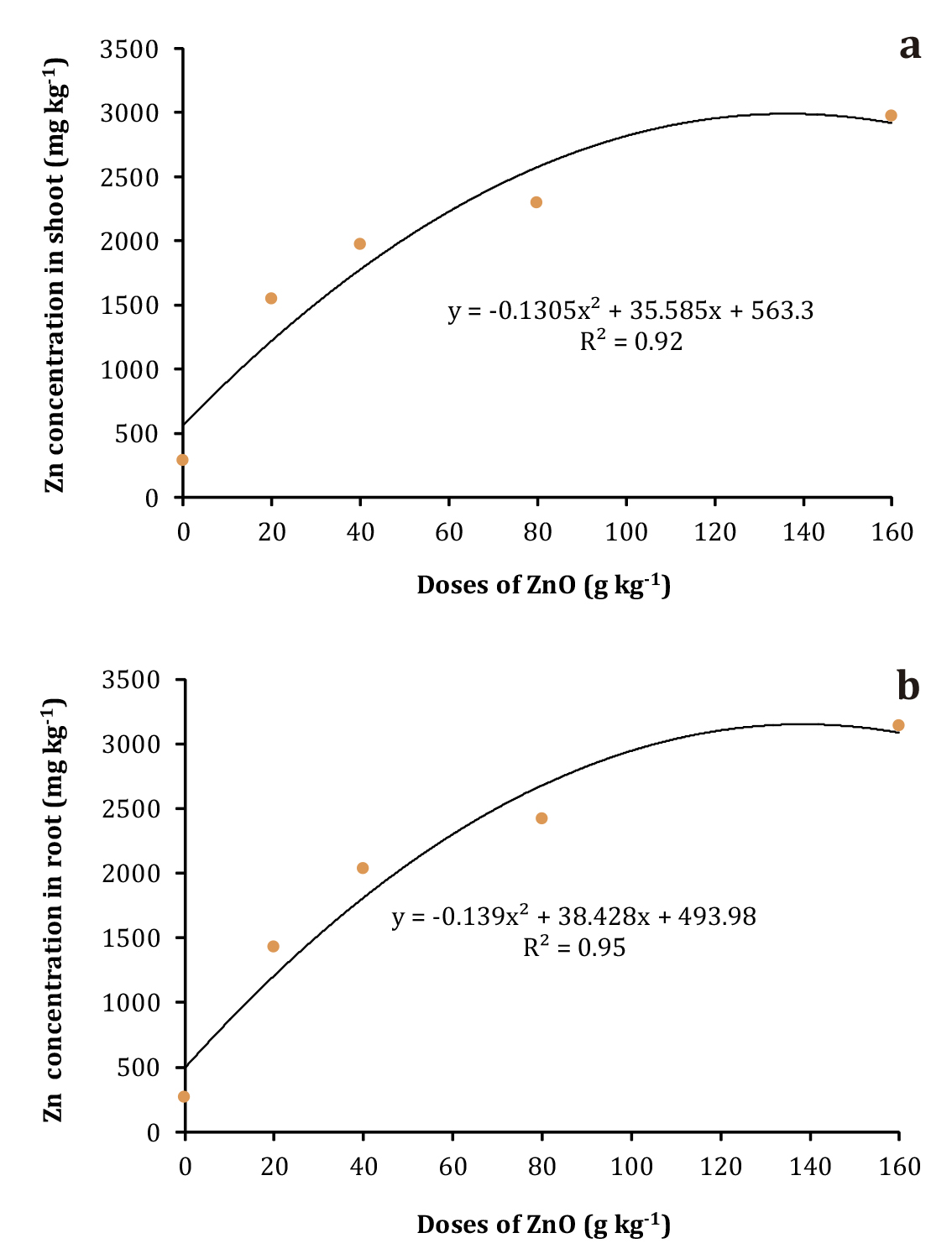Effect of two sources of zinc on the physiological quality of seed and nutrition of rice (Oriza sativa) seedlings
Palabras clave:
micronutriente, revestimiento de semillas, óxido de zinc microparticuladoResumen
Rice seeds coating with microparticulate zinc oxide can maximize the absorption of this micronutrient by the seedling and favor seeds vigor when compared with zinc sulfate. This work aimed to evaluate the sources and doses of zinc in seed quality and in the nutrition of rice seedlings. The experiment consisted of a completely randomized design with four replications, five doses of zinc in the form of oxide (0; 20; 40, 80 and 160 g kg-1), and a control treatment of zinc in the form of sulfate (40 g kg-1). The following parameters were evaluated: germination, accelerated aging, seedlings emergence, emergence speed index, cold test, dry matter, and zinc concentration in the root and shoot of the seedlings. Seed coating with zinc, regardless of the source, improved seed physiological quality and seedling nutrition of the rice cultivar. Zinc sources did not change the germination; however, the oxide form provided better seed vigor, except for the highest dose (160 g kg-1). The increase in the dose of zinc oxide increased the concentration of this nutrient in rice seedlings dry matter. Zinc coating of rice seeds in the form of microparticulate, depending on the dose, can maximize the seeds vigor and increase the concentration of this micronutrient in the seedlings when compared with zinc sulfate, which is the traditional source used by producers.
Highlights
- Zinc (Zn) coating does not affect germination, but influences the vigor of rice seeds.
- The Zn sources affect the Zn concentration in the shoot dry matter.
- Both ZnO and ZnSO 4 showed higher shoot dry matter, when compared with the absence of Zn in rice seeds.
- Oxide zinc (ZnO) promotes greater root dry matter of rice when compared with zinc sulfate (ZnSO 4 ).

Descargas
Publicado
Número
Sección
Licencia
Aquellos autores/as que tengan publicaciones con esta revista, aceptan las Políticas Editoriales.


